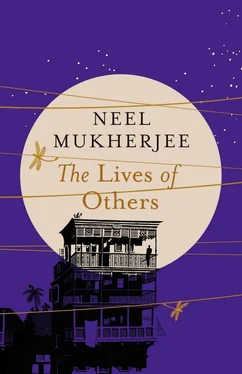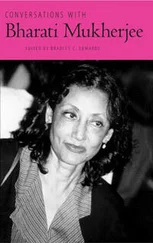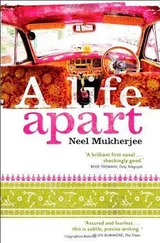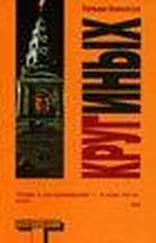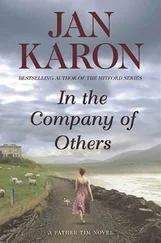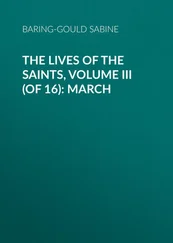Being a Bengali, one is surprised when all the endless spume and froth of talk suddenly reveals itself to be the front of a gigantic wave of action.
THE AUTUMN MILDNESS is just beginning to set in. The blue sky is dotted sparsely with cottony white clouds. Children are on holiday and the skeleton of the puja pandal — a wondrous structure made of bamboo and planks and coir ropes and coloured cloth, stretched and ruched and concertinaed across the bones of bamboo, covering them decoratively in furls and drapes — has already been constructed in the piece of land that abuts the Durga temple of 23 Pally. This cathedral of fabric will house the goddess Durga and her four children, Lakshmi, Saraswati, Kartik and Ganesh, two on either side of her, for nearly five days. On the final evening, the clay effigies of the goddess and her children will be immersed in Tolly’s Nala or the Hooghly at Outram Ghat, marking the end of the biggest festival in the Bengali calendar.
For the last six weeks volunteers organised under the banner of ‘23 Pally Sharbojonin Puja Committee’, consisting mostly of teenagers and young men of the neighbourhood, have gone from door to door, collecting donations for the festival. The intricate, sometimes baroque, light displays have started going up along the street, on trees, on the water tank on the roof of number 11/A/2. This year, the most numerous of them, along the whole length of Basanta Bose Road, all the way to Jogamaya College, are in the form of a fountain tree: a tall column of yellow fairy lights exploding in a six-veined fountain, three on each side, parted in the middle like a child’s drawing of a palm tree. The coloured lights of the cascading head, green, blue and red, blink on and off, as do the yellow lights of the column, and the whole thing gives the magical impression of an upward-flowing capital of water spewing into a polite fountain at the head. This is the pièce de résistance of the lighting display. These displays are competitive affairs between neighbourhoods, but this year everyone in Basanta Bose Road looks smug in the knowledge that they have the edge over their rivals’ parsimonious offerings of coloured fluorescent tubes and strings of fairy lights hung on trees and across balconies. The lighting will be turned on in three days’ time.
A welcoming arch at the entrance to the pandal spells out in lights ‘Sharodiya shubhechha’, autumn good wishes, and the fixture, again made out of lights only, on the water tank on the top of the Dasgupta house features an animated boy kicking a football. The football appears in staccato stasis in three different points of its parabolic trajectory, then reappears, in a slightly Sisyphean manner, at the foot of the kicking boy, for him to start all over again. There is also the light-installation marking the twentieth anniversary of Independence: the Indian tricolour, flanked by one freedom-fighter, Netaji Shubhas Chandra Bose, and one poet, Rabindranath Tagore, has been made to do an impression of stop — start fluttering. Gandhi is, of course, pointedly left out and the light-manufacturers have not tried to simulate a breeze waving Tagore’s long beard. Words of light on top say ‘Twenty Years of Independence 1947–1967’. But everyone agrees that although this has its novelty value, it is nothing compared to those flowing palm trees of light.
In the brimming light of the early morning a gauzy mist lies on the ground in shreds and patches, a mist so thin that you have to look away and then quickly back to perceive it; gazed at for too long, it disappears. The garden at the back of the Ghosh house is full of fragrant shiuli, some flowers having fallen on the grass in the night, making that small section of the garden look like a green shawl flecked with white in one corner. If you look minutely, you can pick out the orange stalks of the flowers; a subtler, more delicately patterned shawl.
There is the smell of puja in the air: a crisp, cool, weightless sensation. In the collective Bengali imagination, fields of kaash phul, with their enormous plumes of satiny cream flowers, bowing gracefully to the clement autumn breeze, are easily visualised, although there are no patches of pampas grass to be seen anywhere, not in this part of the city anyway. And to the collective ear the sound of the dhaak, beaten to a whole complex repertoire of rhythms and syncopations by the dhaaki, is already veering on the air, phrasing a sudden sentence in the mind of someone here, a group of words spoken by someone there, to follow the beat and curve of its percussive line. With one voice, the choir made up of the grass, the drum, the sky, the dew sings out, ‘Holiday, holiday, holiday’.
Knowing well that there will be a possessive rush to grab the puja special autumn issue of Ultorath between Ma, Pishi, Boro-kaki and herself, Baishakhi picks up the family copy, which has arrived that very morning along with bumper issues of Nabokallol, Anandamela (for the children, she thinks derisively) and Ananda Bazar Patrika , and smuggles it to her room. She has a quick flick through it — novels by Ashapurna Devi, Bimal Kar, Bimal Mitra, Shankar. Two years earlier the serialised novels in Ultorath and Nabokallol would have been forbidden reading for her, on the grounds that they were for adults, and she would have been asked to stick to Anandamela , but those rules have now been relaxed somewhat, although she is not wholly confident that her mother or Pishi will not tell her off if she is caught with her head buried in either of these magazines. She hides the copy under her pillows and decides to avoid any possible impediment to her reading by taking it up to the roof terrace after lunch and reading it there, away from the traffic of people in the house, while sitting with her back to the sun, drying her long hair. Possibly with a bowl of mango pickle by her side. Thrilled at the prospect of the treat she has just planned to give herself, she skips to her parents’ room to consolidate her joy by going through the new clothes she has received for Puja, which is only ten days away.
A similar thought may have occurred to Chhaya, for she decides to take out her new Puja clothes from her almirah and arrange them in order of the five days of the festival. But what should have been gloating joy quickly topples over into a restless bitterness as she contemplates the saris laid out on her bed: two pure silks, one tangail, one tashar, one kota, one for each of the five days of Puja. Last year she had had seven, the year before that, eight. She does not take into account the two she has bought herself: those do not count; only the things given one as presents truly matter.
This year her brother Priyo has given her one sari. One only. The tangail. Admittedly it is from Adi Dhakeshwari Bastralaya on Rashbehari Avenue, but Purnima, his wife, has been given four saris. That is four times what Chhaya has received from him. And it is only by guesswork, with a bit of judicious snooping, that she has arrived at that figure. There are only four that she has been able to ascertain; in reality it could well be more, say, seven or eight. The truth will be discovered only over the five days of Puja. She will be watching her sister-in-law’s outfits like a hungry vulture.
As if this were not enough, Buli, her niece, has boasted of ten — ten! — sets of new clothes, including two ghaghras, which are all the rage, and four saris, which Chhaya thinks the girl is too young to wear. No doubt most of them are from her father. They, or to be more accurate, she, she , the mother, has spoilt the girl rotten. Chhaya can already discern the incipient signs — a defiance somewhere in Buli’s eyes, an immodesty in the way she holds herself, a growing tendency to answer back and a complete indifference to her studies, a fact corroborated by her school reports: she barely scrapes through each year. Her secondary-school results are due shortly after the Pujas. It is Chhaya’s belief that the girl will perform so miserably in her first public examination that she will be asked to leave Gokhale Memorial and join an inferior school to continue for the school-leaving certificate. This is exactly what happens when one has an uneducated mother, Chhaya thinks. She has been honing and sharpening the words she will let slip at a family dinner one evening, after the proof of the girl’s failure arrives. She rehearses the tone and inflection every day, perfects the pauses, moves one word here, two words there. She is waiting to pounce. Lately — and Chhaya cannot put her finger on it — there seems to be a. . a. . an air of furtiveness about Buli. She needs watching, that one.
Читать дальше
